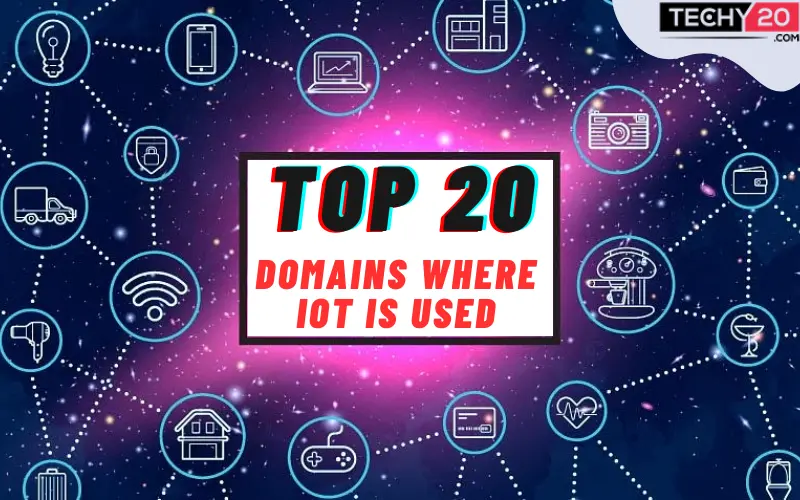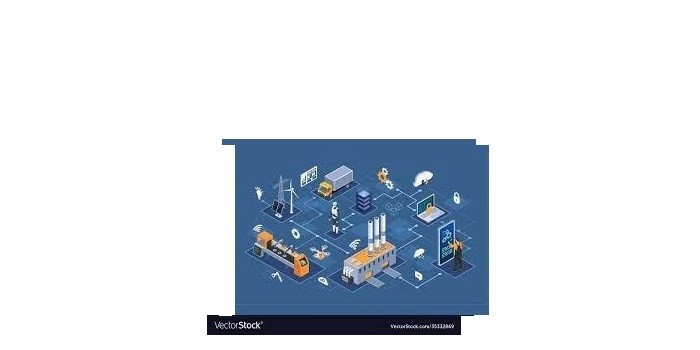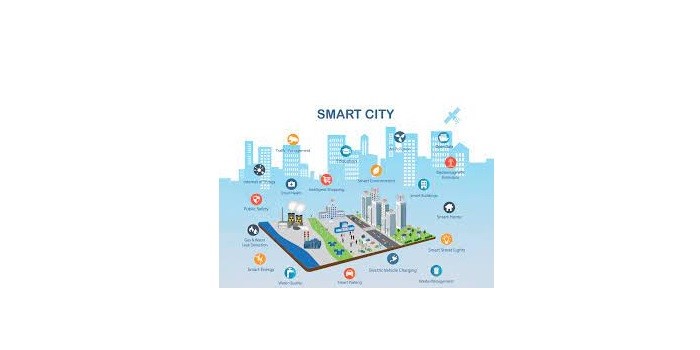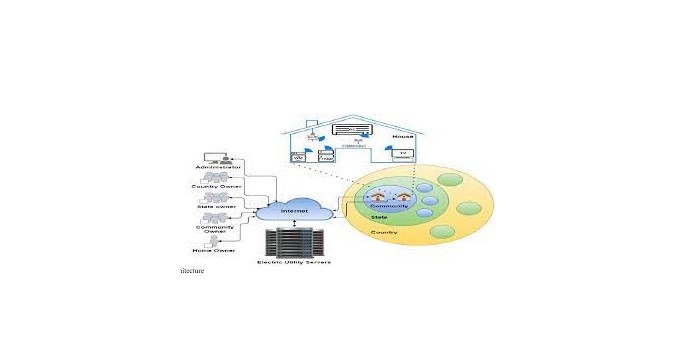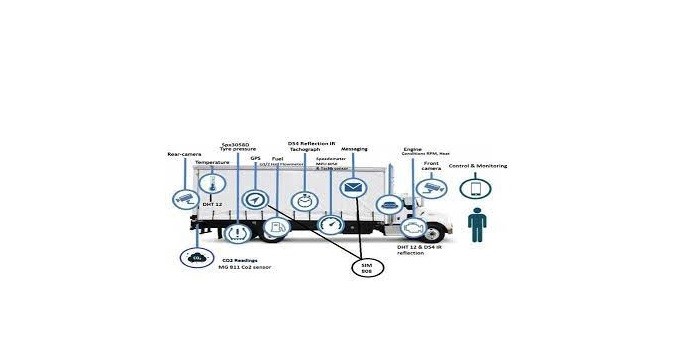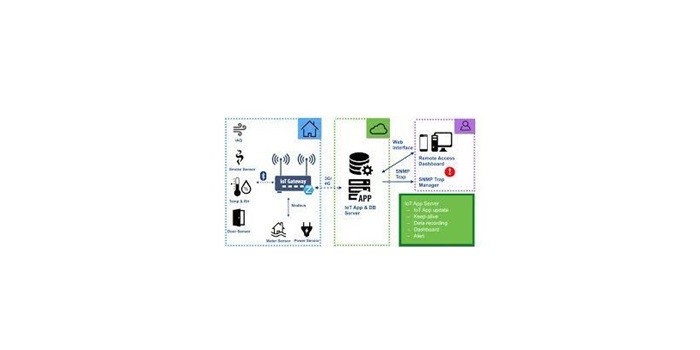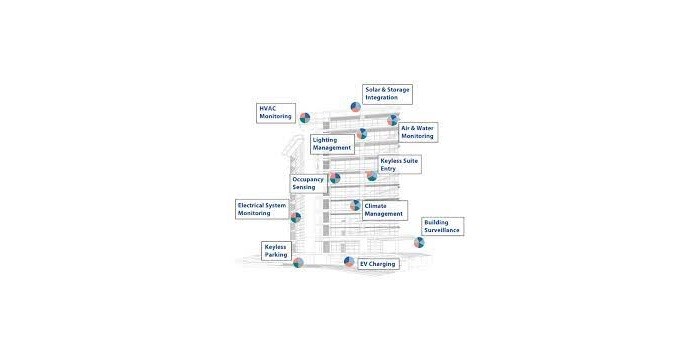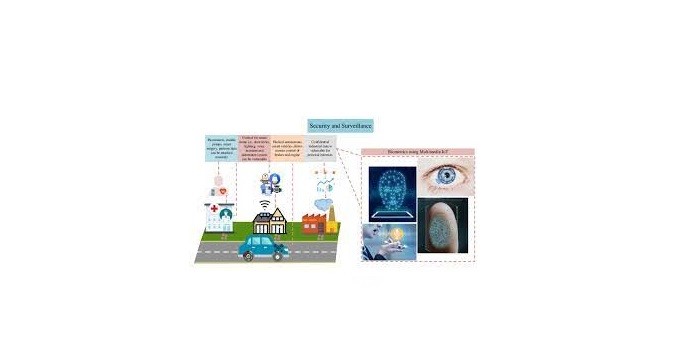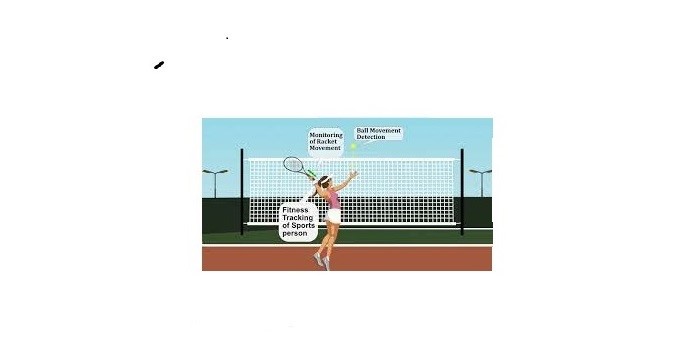“Internet of Things” is referred to as IoT. It describes a network of actual physical things, equipment, machines, cars, building, and other things that are equipped with sensors, software, and other technologies that allow them to gather and exchange data online. These objects collect data that may be examined and used to streamline and automate numerous services and processes, increasing their effectiveness and efficiency. The Internet of Things (IoT) is anticipated to continue expanding and transform how we interact with the world around us as a result of the growing availability of high-speed internet, inexpensive sensors, and cloud computing. The top 20 domains where IoT is currently being used are listed below. IoT is used in a wide variety of fields.
1. Smart Homes And Buildings
IoT devices are employed in smart homes, a crucial application area, to give homeowners automation, convenience, and energy efficiency. Lighting, heating, air conditioning, and household appliances are just a few of the things that Internet of Things devices may automate in a home. A smartphone app, voice commands, or pre-programmed schedules can be used to remotely control lights and appliances.

2. Industrial Iot (Iiot)
Industrial IoT (IIoT), another name for IoT in Industry, is a quickly expanding field that employs IoT devices and technology to optimise industrial processes, increase productivity, and lower costs. Real-time machine and equipment monitoring is possible with IoT devices, which can also analyse data to forecast when repair is required. This can lessen downtime and help avoid expensive problems.
3. Agriculture
Another significant IoT use is agriculture, which is sometimes known as smart agriculture or precision agriculture. Farming operations may be optimised, costs can be decreased, and yields can be increased by using IoT devices and technology to monitor crops, soil, weather conditions, and livestock. IoT tools can track temperature, nutrient levels, and soil moisture to assist farmers improve their irrigation, fertilisation, and other farming methods.

4. Healthcare
The healthcare sector is also utilising IoT to enhance patient care, lower costs, and streamline operations. IoT devices can remotely monitor patients, enabling medical professionals to keep tabs on their health and take appropriate action. This can enhance patient outcomes and lower hospital readmissions.

5. Smart Cities
IoT is linked to a rapidly expanding field called “smart cities,” which uses IoT devices and technologies to manage and improve different areas of urban life, including transportation, energy use, trash management, and public safety. IoT devices may track traffic, accidents, and congestion and provide real-time data to improve traffic and ease congestion.
6. Automotive
The automotive sector is also utilising IoT to develop “smart” or “connected” vehicles. Vehicle location, speed, and other data can be tracked in real-time using IoT devices, which also provide additional vehicle data. IoT devices may track cars in real-time and analyse the data to determine when repair is necessary. IoT devices can be used to track driving habits, detect collisions, and activate emergency reaction mechanisms.

7. Retail
The retail sector is also utilising IoT to enhance consumer experience, streamline processes, and boost revenue. IoT devices can be used to track products, keep an eye on inventory levels, and provide real-time information on sales and consumer behaviour. IoT gadgets can offer individualised shopping experiences, including in-store navigation, special offers, and suggestions based on previous purchases.

8. Energy Management
Energy management makes considerable use of IoT to optimise energy use, cut costs, and boost effectiveness. Smart metres with IoT capabilities can track energy use in real-time, giving users insights into usage trends and pointing out potential areas for improvement. IoT devices may track energy use in homes, businesses, and buildings, delivering real-time data on energy usage and pointing out potential areas for improvement.
9. Logistics And Transportation
IoT is widely utilised in transport and logistics to streamline processes, boost effectiveness, and cut costs. IoT devices allow for real-time tracking of shipments and goods, delivering precise and timely updates on the progress of deliveries. IoT devices can be used to manage and monitor vehicle fleets, improving schedules and routes to increase productivity and save fuel usage.
10. Environmental Monitoring
In order to collect and evaluate environmental data, including air and water quality, weather patterns, and natural calamities, IoT is being used in environmental monitoring. Real-time air quality monitoring using IoT devices can identify pollutants and phases in air quality. Real-time water quality monitoring using IoT devices is possible, allowing for the detection of toxins and the location of water treatment facilities.
11. Building Automation
Building automation uses IoT to enhance building systems, boost energy effectiveness, and raise occupant comfort. By using IoT devices to control lighting systems, lighting levels can be automatically adjusted based on occupancy and amounts of natural light. In order to optimise temperature and air quality based on occupancy and outdoor circumstances, IoT devices may monitor and regulate HVAC (heating, ventilation, and air conditioning) systems.
12. Security And Surveillance
IoT is utilised in security and surveillance to keep an eye on and safeguard assets, property, and people. IoT devices, like cameras, can be utilised to monitor a location, delivering alerts when suspicious behaviour is seen as well as real-time video footage. IoT devices can be combined with biometric and card-based authentication systems to regulate access to buildings and secure areas.
13. Smart Agriculture
Smart agriculture uses IoT to maximise crop output, enhance crop quality, and minimize waste. IoT devices can track soil moisture, pH, and nutrient levels to give farmers real-time information on the health of their crops and soil. Drones and sensors from the Internet of Things (IoT) can track crop growth and health to detect pest infestations, disease outbreaks, and growth patterns.
14. Manufacturing
Manufacturing is utilising IoT to streamline production procedures, enhance quality assurance, and lower downtime. IoT devices may analyse data to continuously monitor industrial equipment and forecast when repair is required. This can lessen downtime and assist prevent breakdowns. IoT gadgets can track the quality of products in real-time, finding flaws and pinpointing areas that need development.

15. Hospitality
IoT is being used in the hospitality industry to enhance visitor experiences, streamline business procedures, and cut expenses. IoT devices can offer customers personalised recommendations based on their tastes, like recommending nearby restaurants or attractions. Hotel assets like linens and towels can be managed and monitored using IoT devices.

16. Education
The Internet of Things (IoT) is being used in education to enhance the teaching and learning process, boost student involvement, and enhance student outcomes. IoT tools can be utilised to give students individualised learning experiences, such as modifying coursework and homework based on their success. IoT devices can be used to monitor building access and identify potential dangers in order to improve campus safety.
17. Insurance
The insurance sector is utilising IoT to better client experiences, speed up the processing of claims, and increase risk assessment. Driving habits can be monitored using IoT devices, providing information for usage-based auto insurance coverage. IoT gadgets like sensors and cameras can be used to track weather trends and track property conditions like leak detection.

18. Sports And Fitness
IoT is being used in sports and fitness to raise spectator engagement, boost training, and improve player performance. Smartwatches and fitness trackers that monitor biometric data can offer in-the-moment insights into an athlete’s performance and recovery. IoT devices can be used to track exercise patterns and provide individualised training plans to improve workout routines.
19. Financial Service
Financial services are utilising IoT to enhance customer experiences, streamline processes, and cut costs. IoT devices can be used to monitor unusual transactions and spot anomalies in spending patterns in order to identify probable fraud. IoT devices can be utilised to improve consumer experiences by enabling contactless payments and offering individualised financial advice.

20. Entertainment
IoT is being used in the entertainment industry to personalise user experiences, streamline processes, and boost income. IoT devices can be used to offer customers personalised content recommendations, such as recommending particular films or TV shows based on their viewing preferences. IoT devices can be utilised to enhance venue experiences by, for example, modifying the temperature and lighting to create a more comfortable atmosphere.

